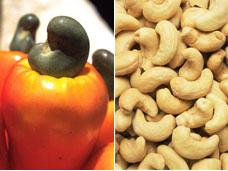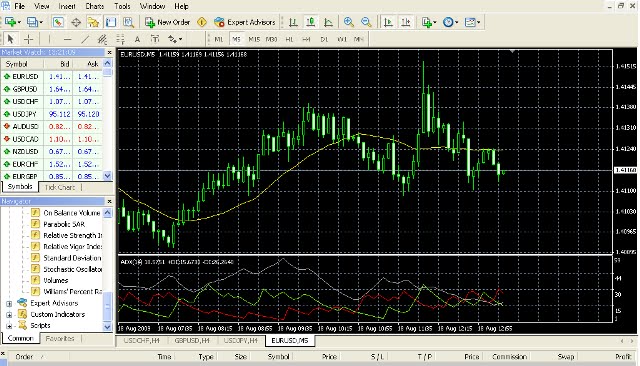Introduction to Trading Forex
Foreign Exchange
This short introduction explains the basics of trading Forex online, a brief
explanation of the markets and the major benefits of trading Forex online.
There are also two samples describing the implications of trading in a bear as well as a bull market to better acquaint you with some of the risks and opportunities of the largest and most liquid market in the world.
Foreign exchange, Forex or just FX are all terms used to describe the trading of the world's many currencies. The Forex market is the largest market in the world, with trades amounting to more than USD 3 trillion every day. Most Forex trading is speculative, with only a low percentage of market activity representing governments' and companies' fundamental currency conversion needs.
Unlike trading on the stock market, the Forex market is not conducted by a central exchange, but on the “interbank” market, which is thought of as an OTC (over the counter) market. Trading takes place directly between the two counterparts necessary to make a trade, whether over the telephone or on electronic networks all over the world. The main centres for trading are Sydney, Tokyo, London, Frankfurt and New York. This worldwide distribution of trading centres means that the Forex market is a 24-hour market.
Trading Forex
A currency trade is the simultaneous buying of one currency and selling of
another one. The currency combination used in the trade is called a cross (for example, the euro/US dollar, or the GB pound/Japanese yen.). The most commonly traded currencies are the so-called “majors” – EURUSD, USDJPY, USDCHF and GBPUSD.
The most important Forex market is the spot market as it has the largest volume.
The market is called the spot market because trades are settled immediately, or “on the spot”. In practice this means two banking days.
Forward Outrights
For forward outrights, settlement on the value date selected in the trade means that even though the trade itself is carried out immediately, there is a small interest rate calculation left. The interest rate differential doesn't usually affect trade considerations unless you plan on holding a position with a large differential for a long period of time. The interest rate differential varies according to the cross you are trading. On the USDCHF, for example, the interest rate differential is quite small, whereas the differential on NOKJPY is large. This is because if you trade e.g. NOKJPY, you get almost 7% (annual) interest in Norway and close to 0% in Japan. So, if you borrow money in Japan, to finance the trade and buying NOK, you have a positive interest rate differential. This differential has to be calculated and added to your account. You can have both a positive and a negative interest rate differential, so it may work for or against you when you make a trade.
Trading on Margin
Trading on margin means that you can buy and sell assets that represent more value than the capital in your account. Forex trading is usually conducted with relatively small margin deposits. This is useful since it permits investors to exploit currency exchange rate fluctuations which tend to be very small. A margin of 1.0% means you can trade up to USD 1,000,000 even though you only have USD 10,000 in your account. A margin of 1% corresponds to a 100:1 leverage (or “gearing”). (Because USD 10,000 is 1% of USD 1,000,000.) Using this much leverage enables you to make profits very quickly, but there is also a greater risk of incurring large losses and even being completely wiped out. Therefore, it is inadvisable to maximize your leveraging as the risks can be very high.
Trading Sample – Trading Rising Prices
If you believe that the euro will strengthen against the dollar you'll want to buy euro now and sell it back later at a higher price.
• You buy euro
Broker quote EURUSD at Bid 0.9875 and Ask 0.9878, which means that you can sell 1 euro for 0.9875 USD or buy 1 euro for 0.9878 USD. In this example you buy euro 100,000, at the quote price of 0.9878 (ask price) per euro.
• The market moves in your favor
Later the market turns in favor of the euro and the EURUSD is now quoted at Bid 0.9894 and Ask 0.9896.
• Now you sell your euro and get the profit
You sell euro at a Bid price of 0.9894.
• The profit is calculated as follows
Sell price-buy price x size of trade (0.9894 minus 0.9878) multiplied by 100.000 = USD 140 Profit (Note that the profit or loss is always expressed in the secondary currency)
Trading Sample – Trading Falling Prices
If, on the other hand, you believe that the euro will weaken against the dollar, you'll want to sell EURUSD.
• You sell euro
Broker quote EURUSD at a Bid price of 0.9875 and Ask price of 0.9880 and you decide to sell euro 100,000 at a Bid price of 0.9875.
• The market moves in your favor
Then euro weakens against the dollar and the EURUSD is now quoted at bid 0.9744 and ask 0.9749.
• Now you buy back your euro
You buy EUR at an ask price of 0.9749.
• Your profit/loss is then
Sell price-buy price x size of trade (0.9875 minus 0.9749) multiplied by 100.000 = USD 1260 Profit
Note: this is only but basic samples
You can also fine useful information about CASH CROPS
SEACRH

Custom Search


